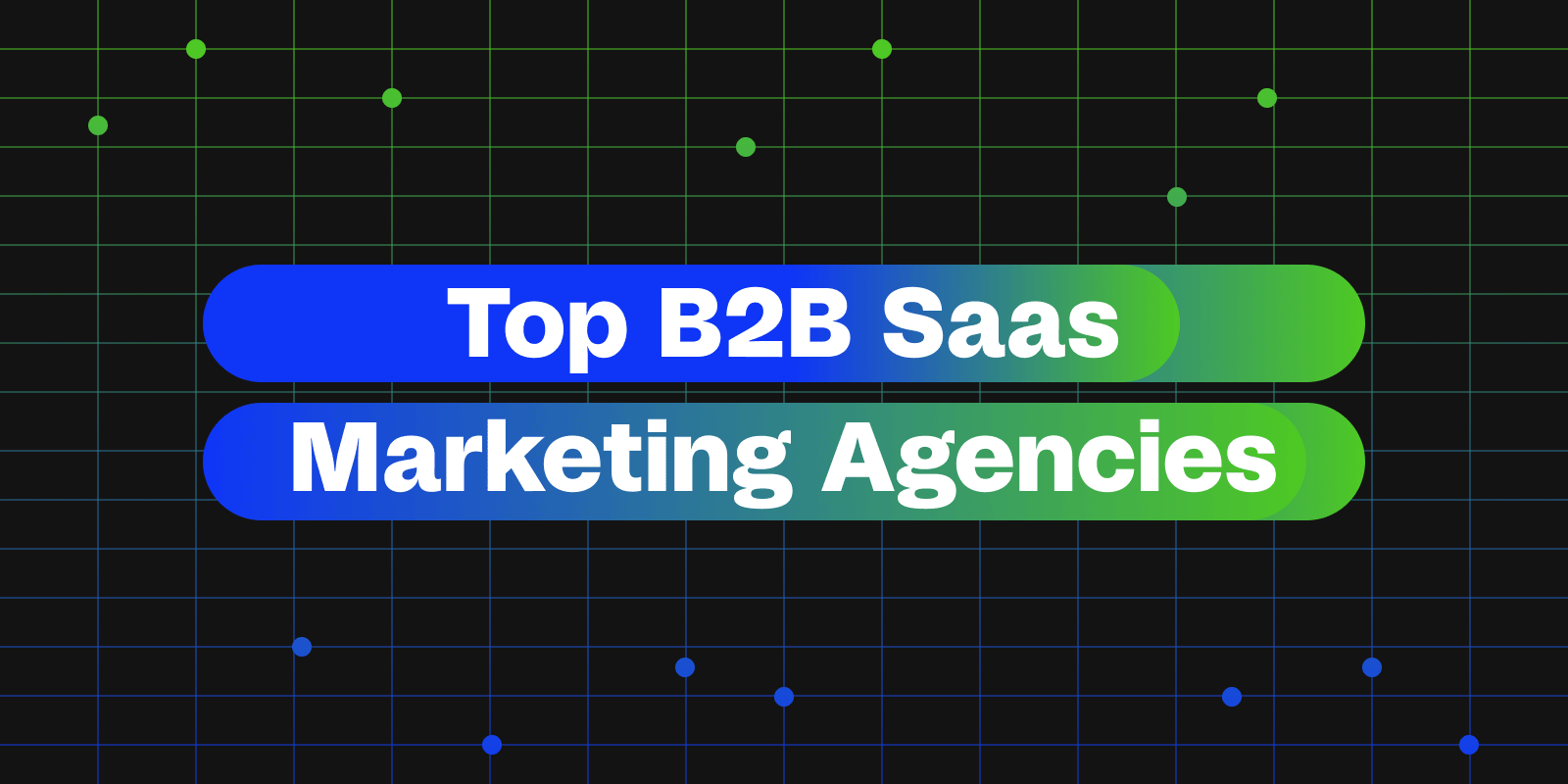In today’s highly competitive business environment, harnessing the power of word-of-mouth has become increasingly crucial. This is where referral programs, more specifically marketing referral programs, come into play as powerful tools in the marketer’s arsenal.
A marketing referral program is a conscious strategy by companies to incentivize loyal customers to promote their voice and promote the company’s exceptional products or services. Existing customers, in a natural way, share their positive service or product experiences with their friends, family, and social network, effectively spreading the word in a convincing and credible way.
The importance of referral programs in driving customer acquisition and retention cannot be overstated. It’s a simple yet profound fact that people trust referrals from someone they know. A study published by Investpro found that 88% of consumers trust online reviews as much as personal recommendations from friends. This trust allows marketing referral programs to hit the targeted audience efficiently and effectively.
One of the key benefits of implementing a referral program in a marketing strategy is that it can result in acquiring loyal and valuable customers. Not only is their customer lifetime value generally higher, but referred types of customers are also more likely to refer new customers, creating a loop of continuous customer acquisition.
They also improve customer retention rates. Satisfied customers who feel valued and appreciated are more likely to stay with a brand and remain active customers for a long time. In terms of businesses, this often translates into positive reviews, increased repeat purchases, and of course, valuable referrals.
Diving headfirst into referral marketing without understanding its nuances can be a daunting prospect. The rest of this blog will discuss the different types of referral programs, provide real-life examples, elaborate on how to promote your referral marketing program effectively, delve into the crucial metrics to measure the success of these programs, and finally give you a high-level step-by-step process on how to create and launch a successful referral program.
Types of referral programs
Referral programs come in a myriad of shapes and sizes, each tailored to a specific type of business or goal. The key is to understand which one aligns best with your company’s objectives. Here’s an overview of different marketing referral program types and their most viable applications:
1. Customer referral program
These programs incentivize current customers to introduce new customers to your business. For instance, a customer could receive a discount or free product for every referral that leads to a purchase. This type of program is exceptionally successful in retail, e-commerce, and subscription services.
2. Partner referral program
This involves strategic partnerships between businesses. Partners refer clients to each other’s services and reap benefits in return. Businesses offering SaaS solutions, consulting, or B2B services can profit from this approach.
3. Advocate marketing program
Here, the focus is on turning current customers into advocates. Encouraged by rewards, these customer advocates willingly promote your brand, helping to create a deep sense of community and customer loyalty. It’s particularly effective for subscription services, software, and community-based platforms.
4. Loyalty referral program
This program rewards loyal customers for making referrals and other activities that earn them points, which can then be used as discount codes and other incentives. It’s an excellent referral marketing strategy for improving customer retention and works wonders for the retail, hospitality, and airline industries.
5. Non-monetary referral program
As the name suggests, this program offers non-financial incentives such as exclusive content, features, or experiences. This approach can be beneficial for industries like online communities, gaming, or content platforms.
6. Two-sided incentive program
A scenario where both the successful referrer and the referred get rewarded. It fosters a mutual sense of benefit and is perfectly suited for e-commerce, subscription services, and financial services.
7. Tier referral program
This type of program offers escalating rewards depending on the number or value of referrals made. Ideal for multi-level marketing, retail, and digital services.
8. Social media referral program
In today’s digital age, leveraging social media channels for sharing referrals and earning rewards makes perfect sense. Online retail, digital content, and apps tend to utilize this approach effectively.
9. Event-based referral program
These are time-bound programs centered around occasions, holidays, or product launches. Businesses in e-commerce, hospitality, and event services can use this to their advantage.
10. Charitable referral program
Integrate corporate social responsibility by donating to charity for each referral. Not only does this resonate with ideal customers, but it also gives a reputational boost to the brand. Key industries for this kind of program are e-commerce, CSR initiatives, and sustainable brands.
The choice of a referral program largely depends on the nature of the business. A DTC business would thrive best with a customer referral, loyalty program referral, or a non-monetary referral program due to its direct interaction with the end consumer. For a B2B business, a partner referral, advocate marketing or two-sided incentive program would be more effective since they center around collaboration and mutual benefits. Keep in mind these standards are not set in stone – a two-sided incentive, for example, may be an excellent choice for a DTC brand.
Examples of successful referral programs
Picking the right marketing referral program can be overwhelming. To guide you through the decision-making process, let’s look at a few referral program examples from well-known companies that illustrate best practices in referral marketing.
1. Dropbox
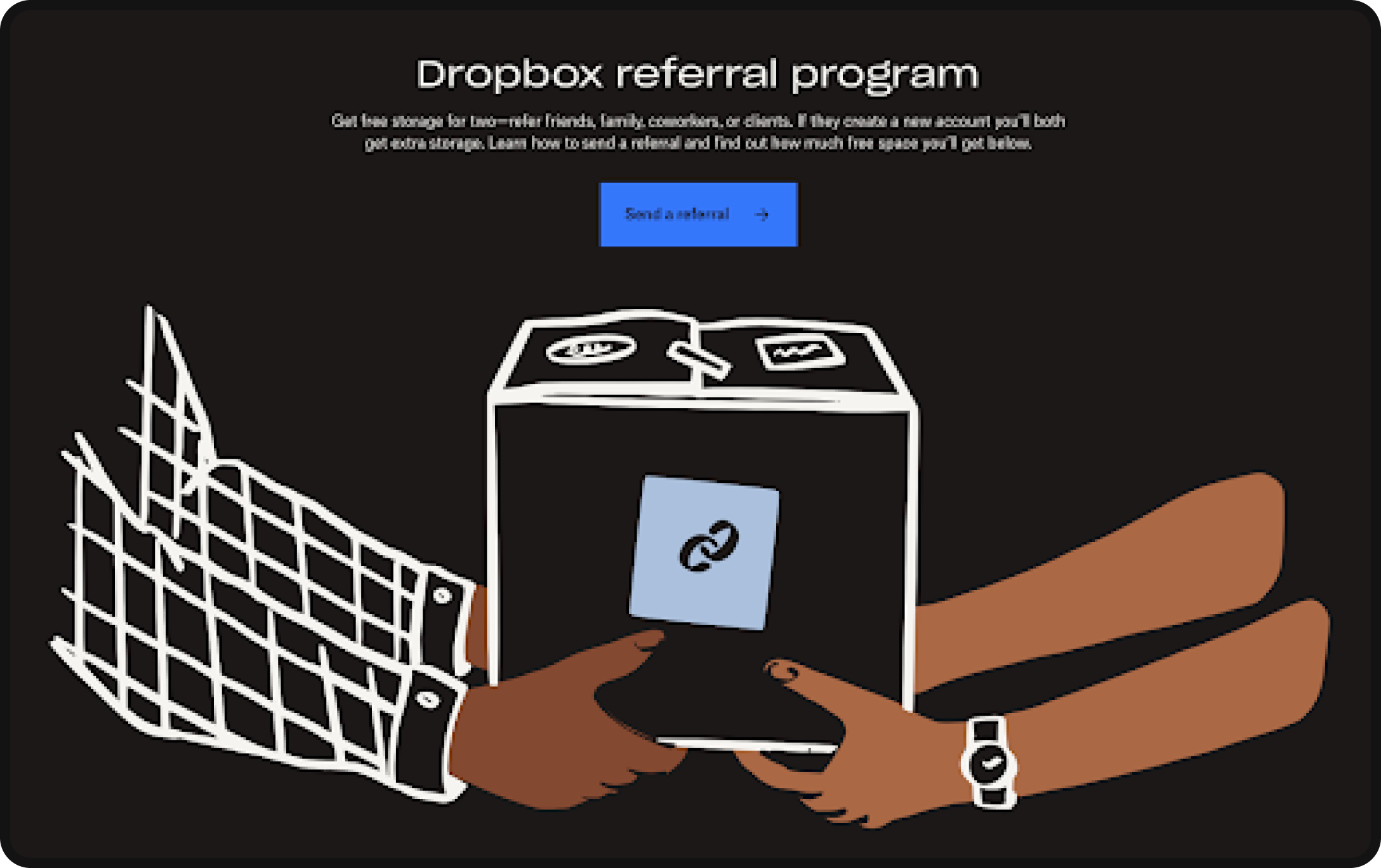
Dropbox’s referral program, known as one of the best referral program examples, rewards not only the referrer but also the referred individual by providing both parties with extra storage space. This is a classic example of a two-sided incentive program and has been pivotal in the company’s exponential growth.
2. Fiverr

Fiverr’s referral program makes it attractive for users to share their platform with a 10% cash reward for the referred’s first order. Catering to its digital-savvy user base, the simplicity and direct financial benefits of this customer referral program have proven to be very attractive.
3. T-Mobile

T-Mobile has seen remarkable success with its marketing referral program. By offering a $50 prepaid MasterCard for each successful referral, they’ve been able to motivate customers to spread the word about their services.
4. Evernote
Evernote uses a point-based referral program where the referrer earns 10 points for each successful referral, up to 3 referrals. These points are enough for a 3-month (paid) Personal package. This unique approach plays well with their productivity-oriented user base.
5. Amazon
Amazon stands out for its innovative approach to referral marketing. Instead of providing direct cash or discounts, they offer affiliate marketers a commission of up to $3 for every visitor that starts a 30-day free trial of Amazon Prime.
These examples demonstrate how successful companies tailor their referral programs to match their brand and customer base. Whether it be through cash, credit, free products, or flexibility, each of these companies managed to motivate their existing customers to refer new ones. The take-home message here is that a successful marketing referral program requires a deep understanding of your customer’s motivations and a design that aligns rewards with these motivations.
Promoting referral programs
Once you have established the type of referral program that will best suit your business model and have identified some successful referral program examples to emulate, the next step is to promote your referral program effectively.
Utilize all the communication channels at your disposal, including email marketing, social media, and on-site or in-app notifications, to announce and draw attention to your generous referral program. For your existing customers to share it, they first have to know about it.
Rewards or referral incentives that provide actual value to the participant can significantly increase engagement in your referral program. This could be in the form of discounts, free products, cash rewards, or even gift cards. Pick something that you know will align with your customer’s desires.
The more barriers there are to entry, the less likely participants are to engage. Simplify your referral process so that it’s as easy as possible for your existing customers to refer new ones while ensuring that they understand the potential rewards involved. Simplicity is key. Never forget the good ole KISS (Keep It Simple Stupid).
Use engaging content to communicate the benefits of your referral program. This might involve educational content that guides customers through the process, testimonials from happy customers, or enticing visuals throughout your marketing efforts.
Segment your audience and tailor your messaging to fit each cohort. A referral marketing campaign that’s personalized can go a long way in strengthening customer relationships with your existing customers, thus encouraging them to participate. Don’t think this is a small task. Make sure you make use of all the data you have available. Be strategic and approach this step with care and attention, as it can be the biggest boon or crutch.
Don’t let your referral program fade into the background — remind your customers of its existence regularly, and update them on the benefits they could earn through their participation.
Make your landing pages useful and appealing. Points that should be highlighted include clear CTAs, the benefits of the referral program, and how easy it is to refer a friend. No need to overcomplicate, but don’t underdo it either. A well-designed, simple landing page can be the maker or breaker of sign-up rates.
Always remember: creating a sense of urgency can spur action. Consider running limited-time promotions that can provide an immediate boost to your marketing referral program.
Engage with your audiences on forums and groups or on Q&A platforms — this can also extend the reach of your referral programs, but primarily, it will help build that sense of community, which over a long enough time scale, becomes extremely valuable for businesses.
Lastly, collaborations or sponsored content can be a great way to reach entire communities of potential customers and extend the reach of your referral program beyond your existing customer base.
Remember, a well-promoted referral program not only aids customer retention but also helps acquire new customers more cost-effectively.
Key metrics for measuring success
To successfully implement a marketing referral program and fully understand its impact, monitoring key metrics is crucial. These indicators help you measure the effectiveness of the program, tweak it for better performance, and justify your marketing spending to relevant parties.
1. Referral rate
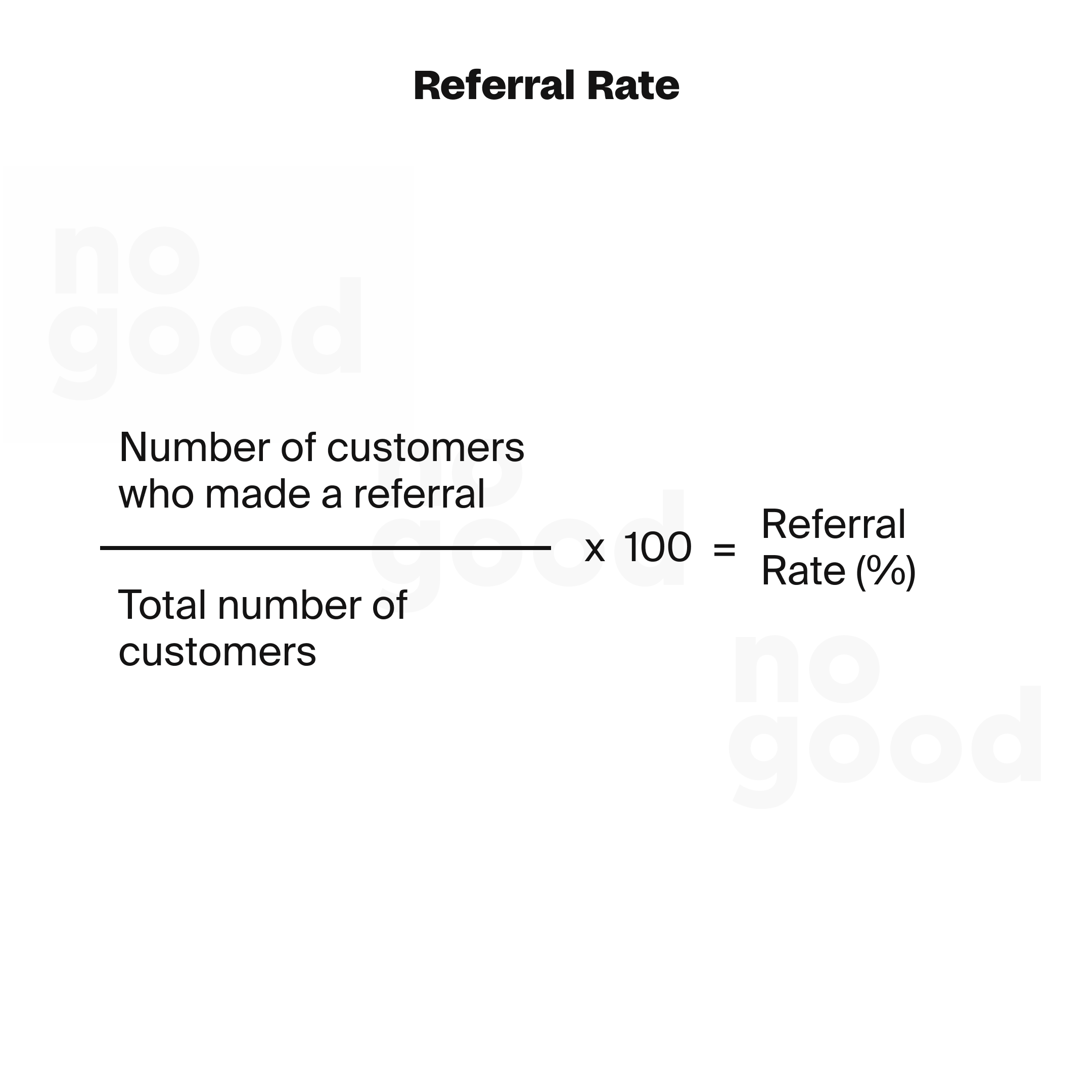
This is the percentage of customers who make a referral. This indicates the overall engagement and effectiveness of the program, and a high referral rate could signal happy customers who are satisfied with your product or service.
2. Participation rate
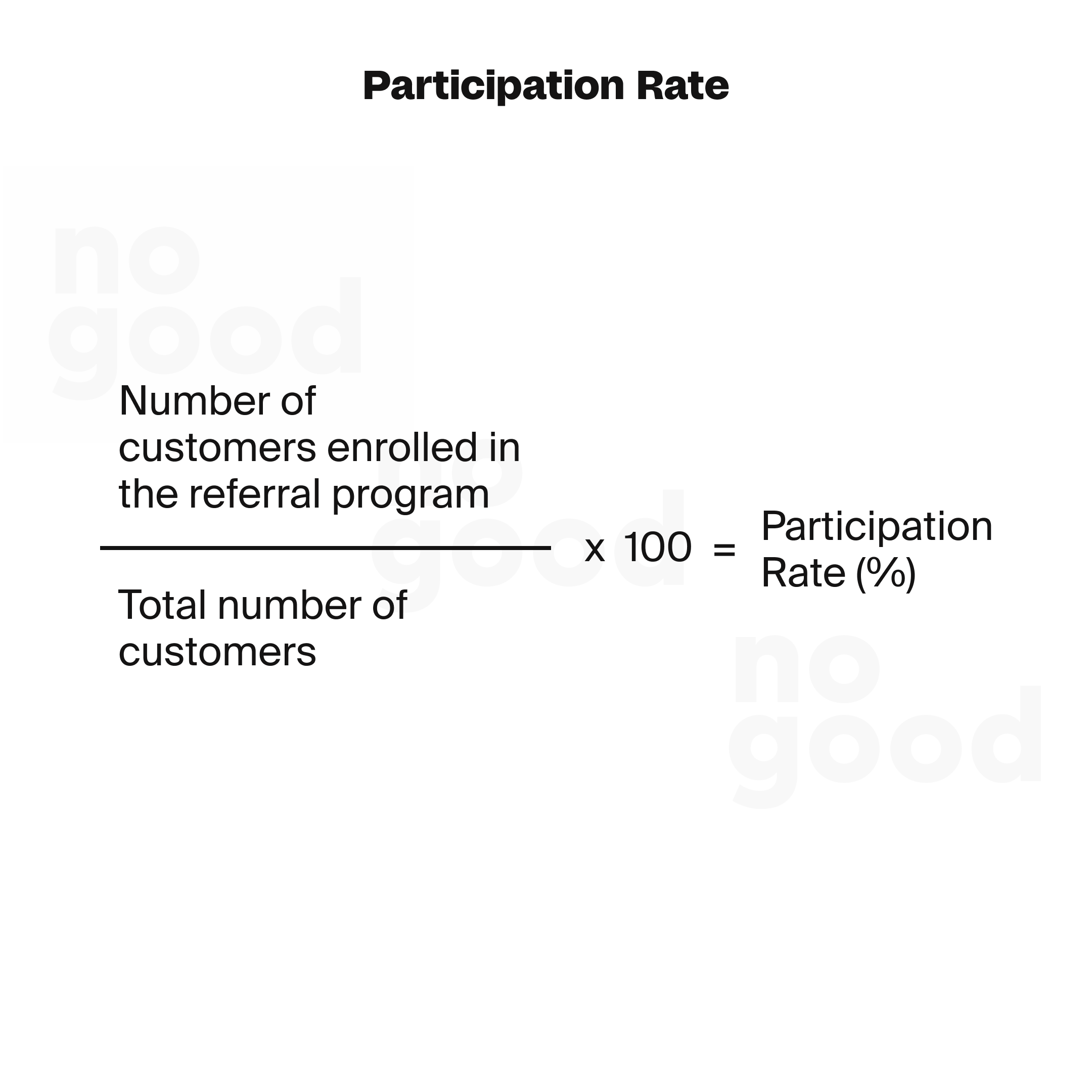
This measures the number of customers enrolled in the referral program out of the total customer base. This metric allows you to assess the appeal and accessibility of the program.
3. Conversion rate
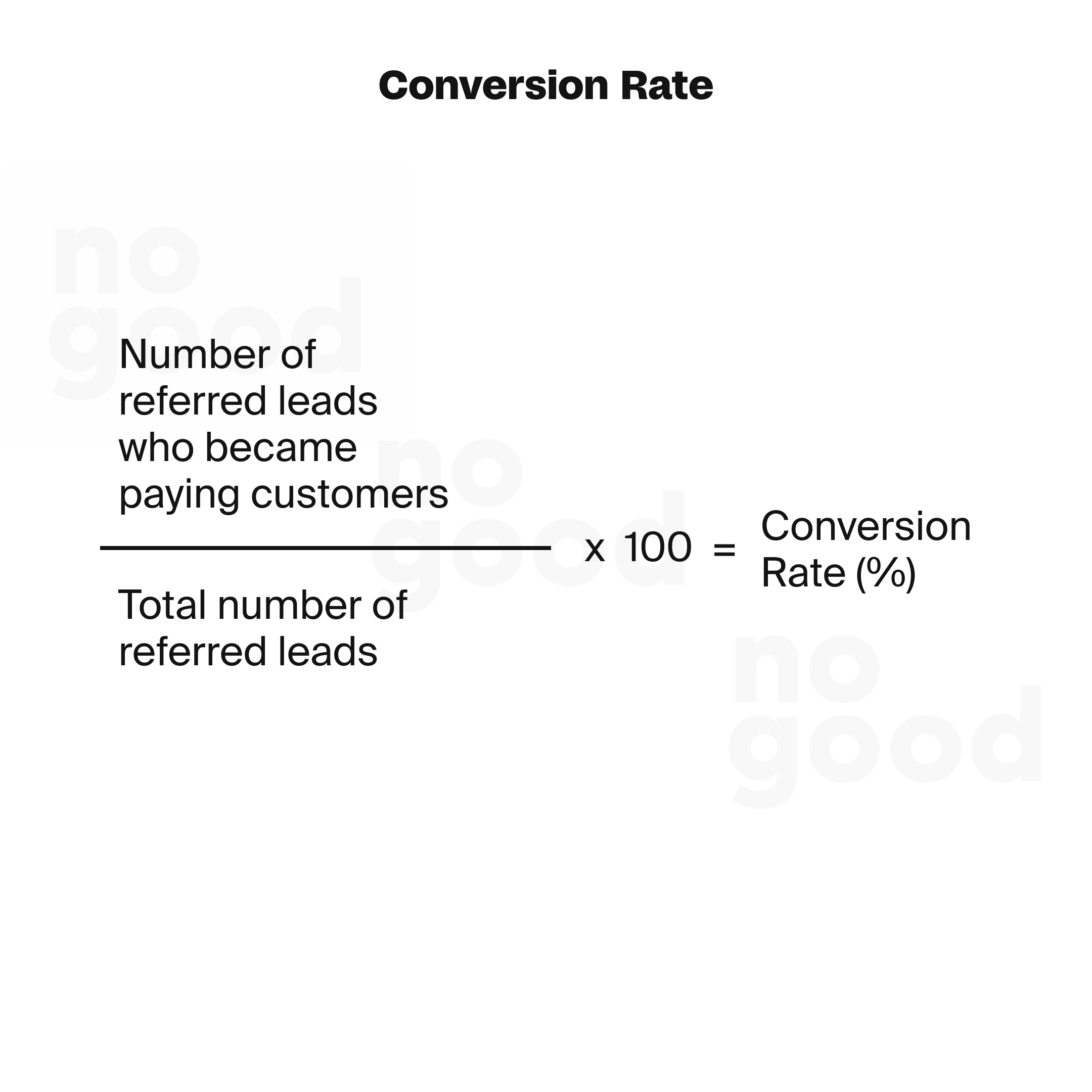
This is the percentage of referred leads who convert into paying customers. A high conversion indicates that referred customers perceive your product or service to be high value and the effectiveness of the referral program messaging.
4. Lifetime value of referred customers
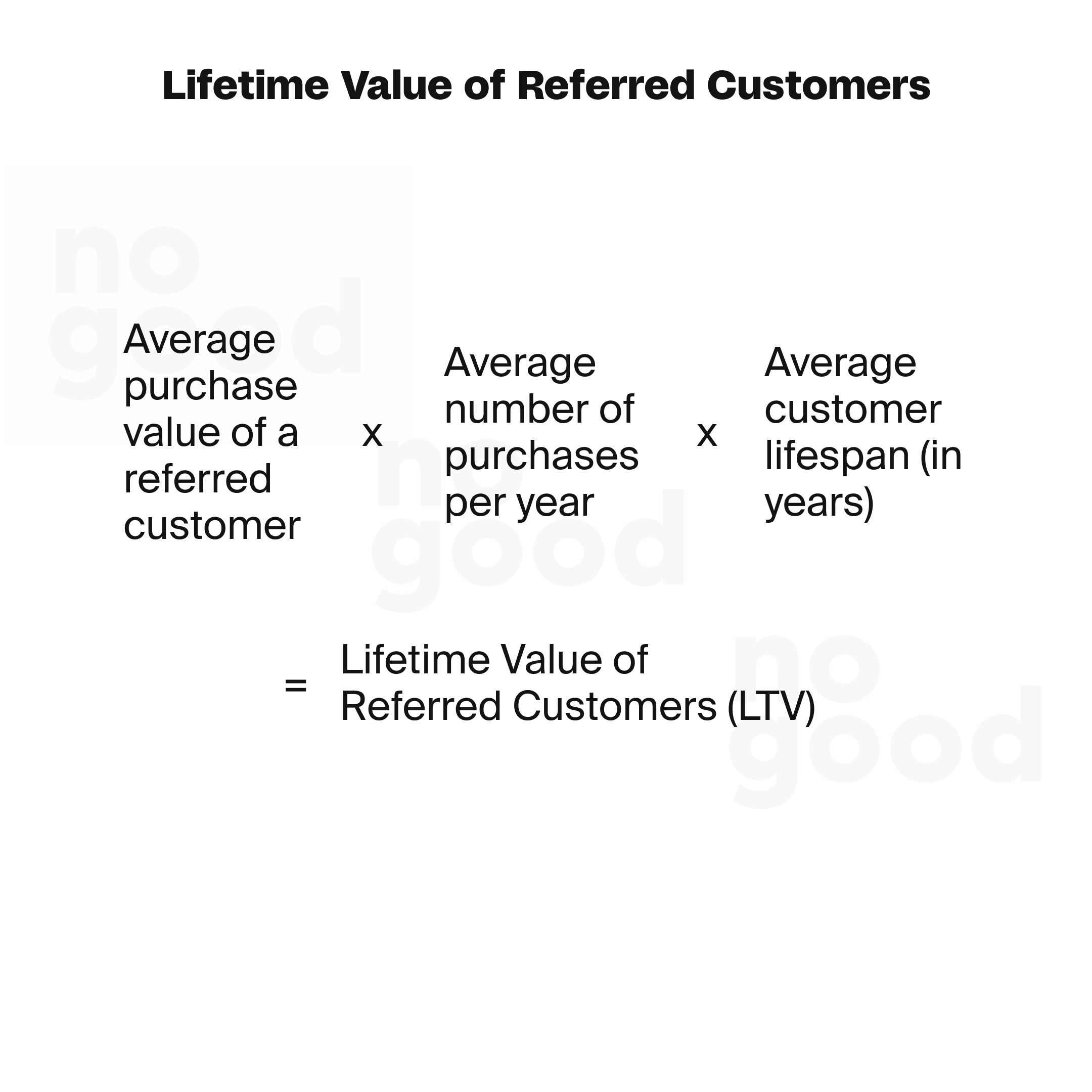
This represents the projected revenue that a referred customer will generate throughout their lifetime. You can use this KPI to determine the long-term value and profitability of acquiring customers through referrals.
5. Cost Per Acquisition (CPA)
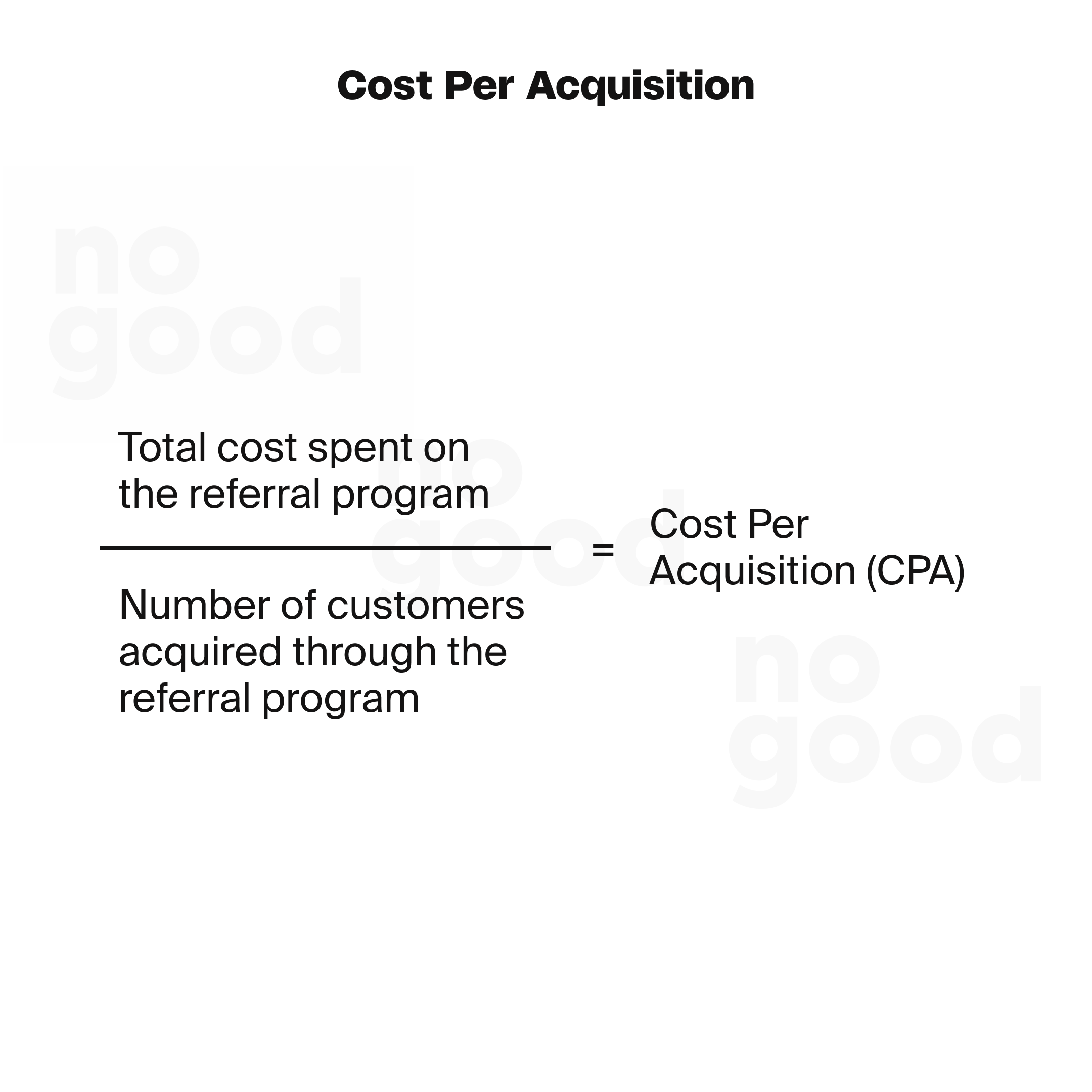
CPA calculates the cost associated with acquiring a new customer through the referral program. By comparing the CPA of your referral program with other acquisition channels, you can evaluate the efficiency of your referral program.
6. Time to conversion
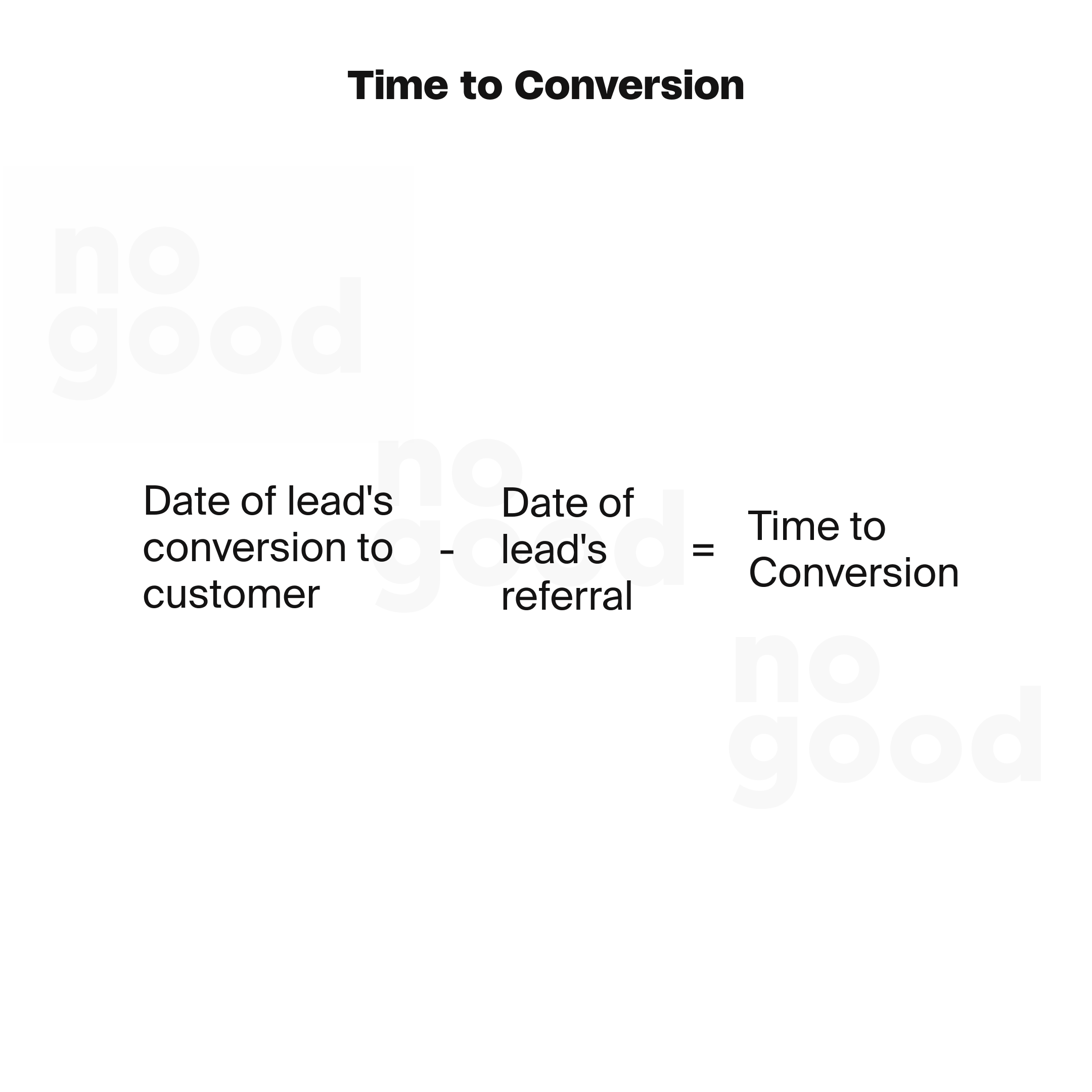
This measures the amount of time it takes for a referred lead to convert into a customer, helping to assess the efficiency and effectiveness of the sales funnel for referred leads.
7. Customer retention rate of referred customers
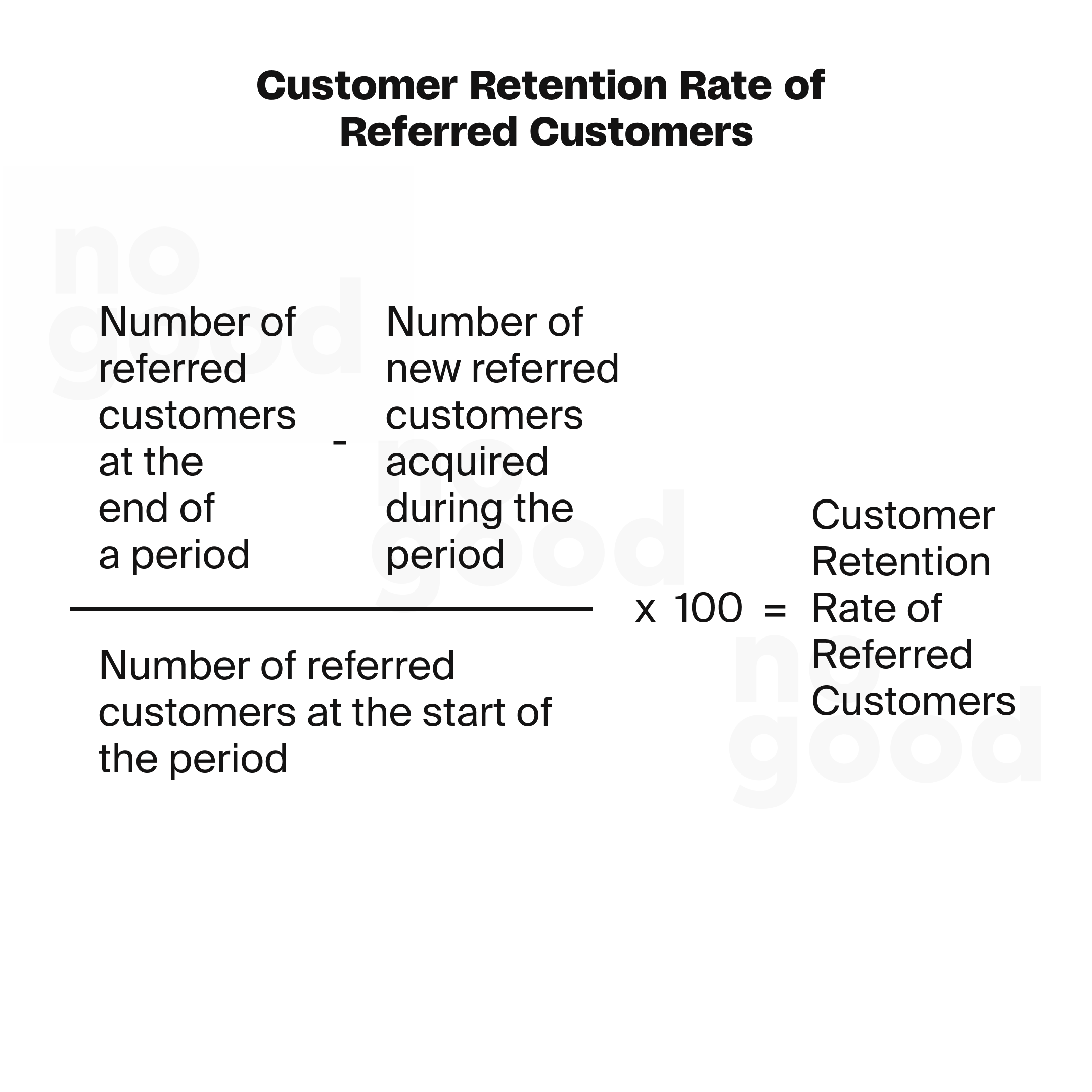
This calculates the percentage of referred customers who continue to engage with the company over time. A high retention rate signifies customer satisfaction and loyalty.
Imagine you started the quarter with 100 referred customers. During the quarter, you acquired 20 new referred customers. By the end of the quarter, you have 110 referred customers left (this means some of the initial customers didn’t make a repeat purchase or stopped using the service).
Let’s plug these numbers into the formula:
= (110 – 20) / 100 x 100%
= 90/100 x 100%
= 90%
So, the Customer Retention Rate of Referred Customers for that quarter is 90%.
8. Churn rate of referred customers
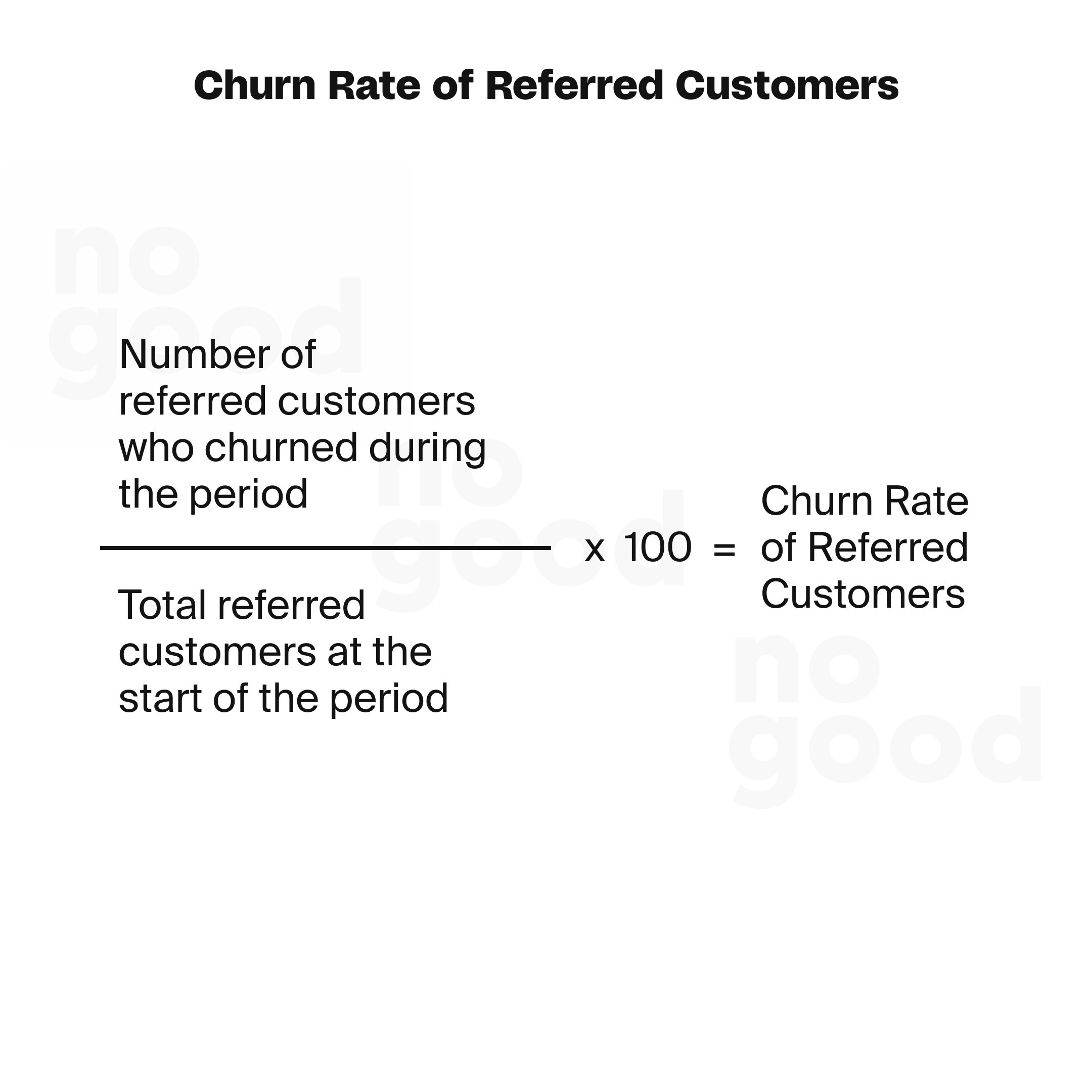
This indicates the percentage of referred customers who stop using your products or services within a given time period. An increasing churn rate might call for an evaluation of the quality or fit of the referred customers.
9. Average Order Value (AOV) of referred customers
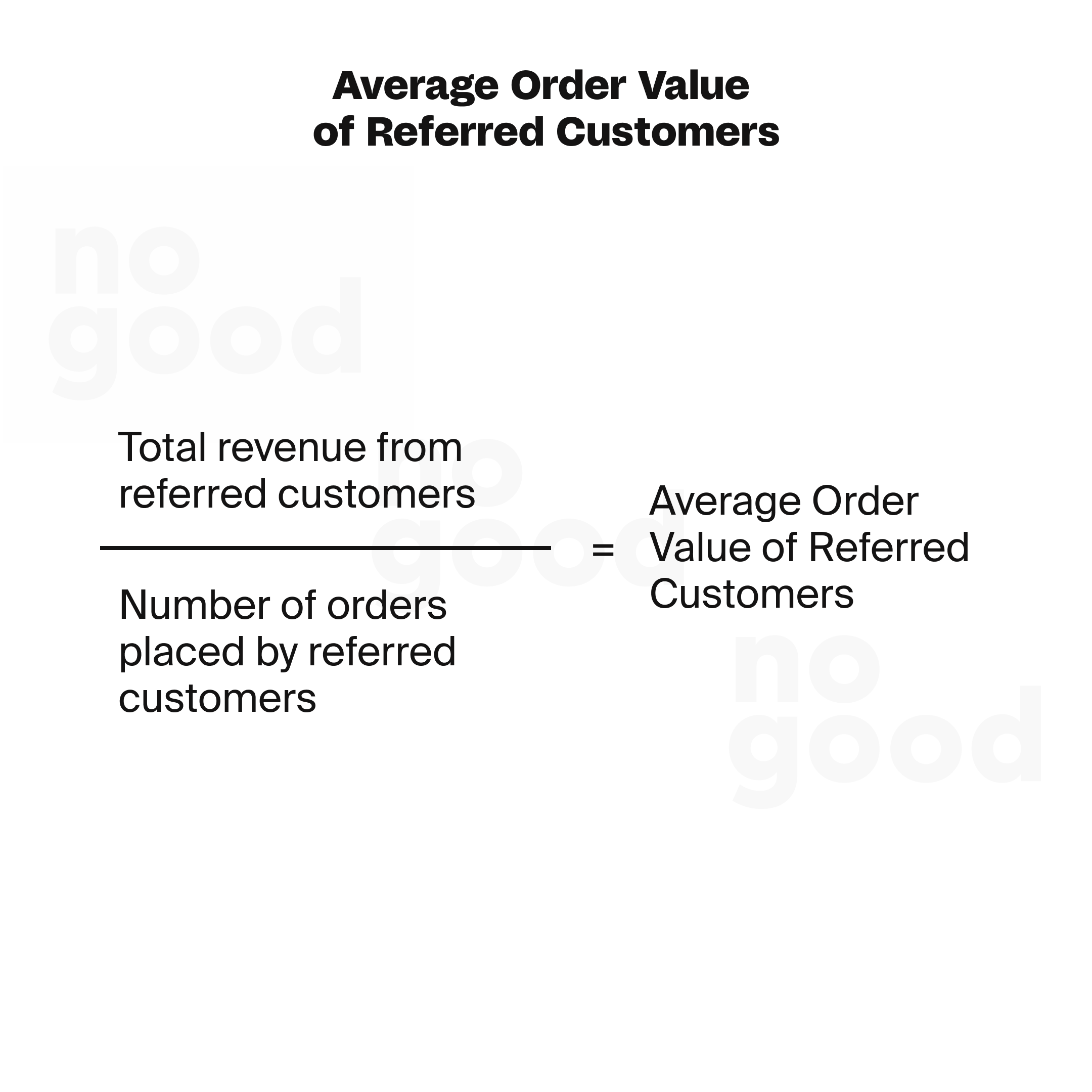
This indicates the average amount of money spent by referred customers per transaction. A high AOV could give a broad indication of referred customers’ spending behavior and their value to the company.
These KPIs together create a holistic view of the success and ROI of your referral program, helping to identify areas of strength as well as those requiring enhancement. Whether your objective is to boost customer acquisition, develop a loyal customer base, or increase revenue, tracking these metrics can help steer your referral marketing efforts in the right direction.
Step-by-step instructions for creating and launching a successful referral program
Referral programs can feel complex, but following a methodical process can take the stress out of this marketing tactic and demonstrate real results.
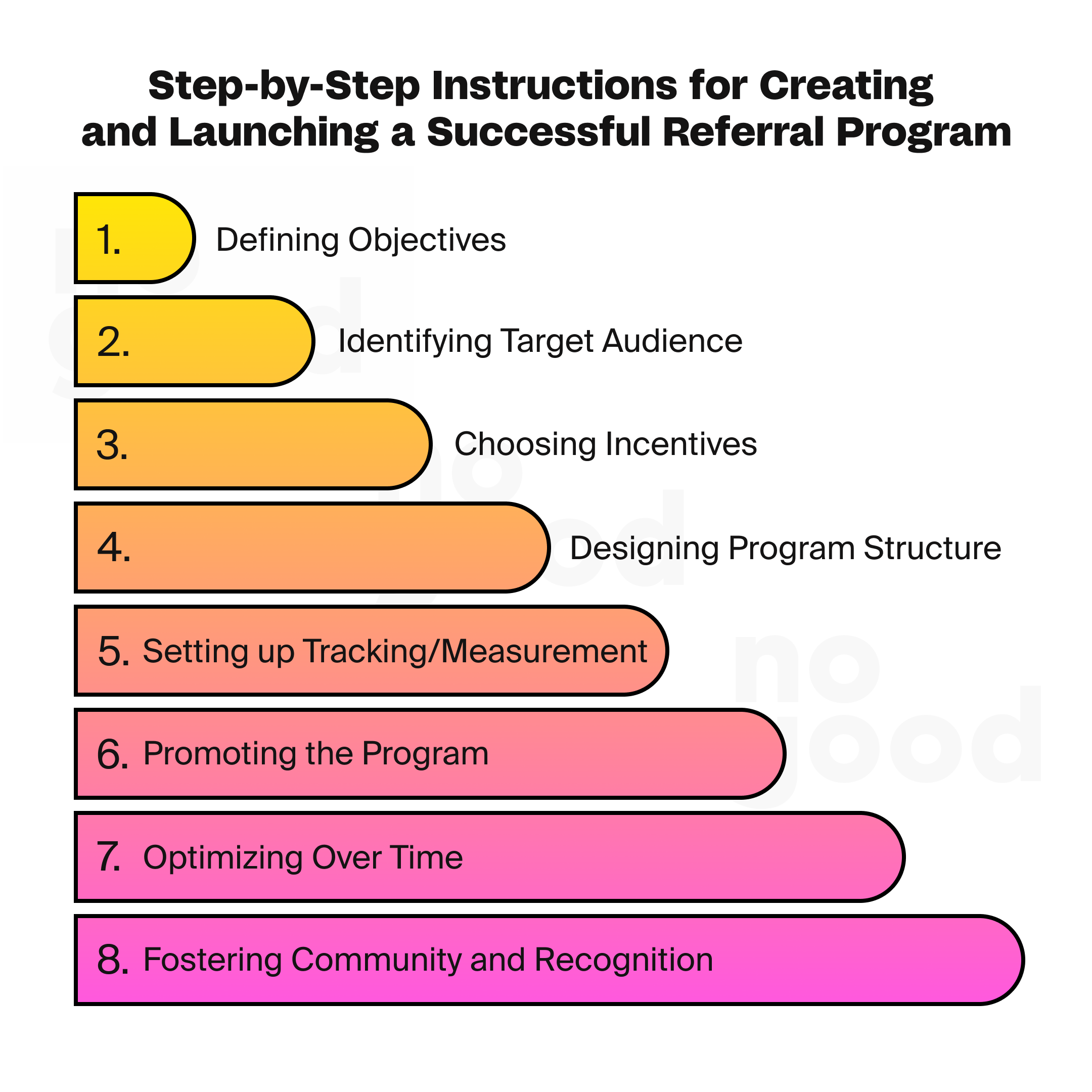
- Defining objectives: Clarity is key. It is crucial that CMOs, Marketing VPs, and Marketing Directors establish clear goals from the onset. Whether it’s to ramp up customer acquisition, increase sales, or improve customer loyalty, objectives need to fall in line with the broader business goals.
- Identifying target audience: Once objectives are laid out, the next step is determining the ideal referrers and referees. Consider factors beyond demographics. Look at psychographic patterns and recognize behavioral variables to frame the referral program that perfectly fits the needs and desires of the target audience. Remember, dig through your data to uncover audience insights.
- Choosing incentives: Your rewards should not only be enticing but also hold concrete value for your referrers and referees. From discounts and cash rewards to exclusive experiences and early feature access, the incentives need to strike a balance between being cost-effective for the business and valuable to the audience.
- Designing program structure: The core rule is to keep it simple. The program must be straightforward and easy to understand. Terms and conditions should be clear, referral processes need to be straightforward, and rewards should be within reach. This is around the time when you’ll need to decide whether you are building a program from the ground up or if you are leveraging a third-party solution, which may already have figured out and resolved many of the kinks that can come with building a referral program from scratch. Smaller organizations tend to go the third-party route, as it is significantly more affordable and still quite agile.
- Setting up tracking and measurement: Employ unique referral codes and integrate analytics tools for robust results tracking. From monitoring direct referrals and conversions to evaluating the broader performance of the referral program, tracking and measurement are pivotal to the success of marketing referral programs. Mostly all third-party solutions will have their own built-in analytics, which may be enough for what’s likely needed. However, this isn’t always the case, so it is a good idea first to map out all the things you’d like to track and analyze and then afterward see if the third-party route can solve that or if you’ll need something more custom.
- Promoting the program: Utilize all marketing channels at your disposal. From emailing and social media to website banners and in-app notifications, the promotional efforts should be wide-spanning and consistent—reminding existing customers of their ability to benefit from referring friends or contacts.
- Optimizing over time: A referral program should not be stagnant. Regularly review program data and feedback to adjust accordingly. Trying different incentives, refining promotional tactics, and adjusting the program’s design should lead to better participation rates and improved conversion rates.
- Fostering community and recognition: Celebrate your top referrers and create an enthusiastic community around your referral program. Engage customers on social media, talk about them in newsletters, and offer exclusive rewards. Give them a sense of ownership and belonging.
A well-executed marketing referral program can transform your customer base into a powerful marketing force. By focusing on engaging incentives, simple structure, consistent promotion, and result-driven optimization, businesses can benefit from increased customer engagement, enhanced brand loyalty, and potentially exponential growth. Remember, when your existing customers win, you win.




